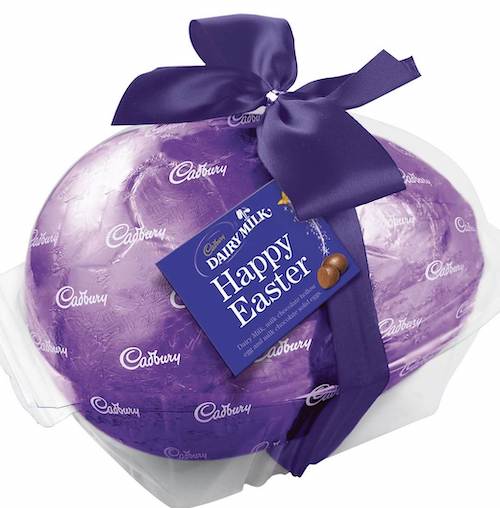Cadbury Chocolate Easter Eggs

The original molded CHOCOLATE EASTER EGG was the product of candy company competition and one man’s dedication to the Quaker philosophy of helping the community.
In 1824, John Cadbury opened a small shop in Birmingham, England, specializing in a variety of drinks, including tea, coffee, and drinking chocolate. He was quite successful, particularly with the chocolate, so in 1831 he and his brother opened a chocolate and cocoa factory to better produce their top seller. Enter Joseph Fry, whose company J.S. Fry & Sons was the largest commercial producer of chocolate in England. In 1847, when Cadbury heard that Fry had started experimenting with ways to create a moldable chocolate bar, Cadbury’s competitive spirit went into overdrive! Determined to beat his competitor, he too began working with chocolate, eventually creating what he called “French Eating Chocolate.” He must have done something right because in 1854 a Royal Warrant was granted by Queen Victoria, making Cadbury the chocolate of choice among the Royal family.
It took some time to achieve the perfect blend of smooth chocolate and an egg-shaped mold, the chocolate egg not approved by John Cadbury until 1875. In fact, Joseph Fry had created a chocolate egg two years prior. Cadbury’s original chocolate eggs were made with dark chocolate, the surface smooth and plain, with a hollow center filled with sugar coated chocolate almonds called “dragees.” He marketed them as a “luxury” treat for “adult” tastes, the almonds reinforcing this idea of elegance. The eggs were also sold in fancy wrappings and even boxed, and the given names (see advert to the right) were chosen to subtilely convey decadence.
Decorative eggs followed, the chocolate shells beautified with pretty piping and marzipan flowers, and by 1893 the Cadbury company had perfected milk chocolate and held 19 Easter egg patents. The advertisement below of three Cadbury egg varieties is from the early 20th-century.

It is worth noting at this point, in case anyone is imagining the small creme-filled Cadbury eggs that can be bought in bags at any store (more on those in a bit), the original Cadbury chocolate eggs were HUGE! Take a look at the images below from 1930 of a Cadbury assembly factory.
Not content to only produce chocolate eggs, Cadbury launched a series of novelty Easter Eggs. These included a cardboard egg known as a “Fancy” in 1906 that was filled with assorted chocolates. Others were sold in Easter baskets. Obviously there are few surviving examples of the yummy candy or the packaging, the images below the only ones I could find.

The success of the Cadbury Company led to a merger with Fry in 1919, ending the long competition. Their combined talents and resources allowed for an expansion of products, most notably the cream-filled eggs in 1923. Those crème eggs were very different than what is available now, and for several decades underwent a series of changes. The modern version which today dominates the Cadbury Creme Egg market arrived in 1971, although this too has had multiple recipe changes with tinkering causing a great deal of controversy. People don’t always like change, and in the case of Cadbury Creme Eggs, there are regional differences as well. For example, a creme egg in the UK is made with a formula quite different than the US Cadbury creme eggs manufactured by Hershey’s. Bottom line is that not all chocolate is alike, something Mr. Cadbury and Mr. Fry leaned nearly 100 years ago!






I love the Cadbury double chocolate eggs! The egg with flowers on it is almost too pretty to eat. Almost.lol
I prefer Cadbury’s milk chocolate but don’t eat so much of it now. I also love marzipan so the egg decorated with flowers would have been a favourite I think.
I also like Lindt chocolate and have bought the bunnies for my twin grandsons along with some Malteaster white chocolate bunnies.
Alas, with postage as expensive and taking as long as it does nowadays I can’t send any to my Australian grandsons but will spoil them when they can next come here.